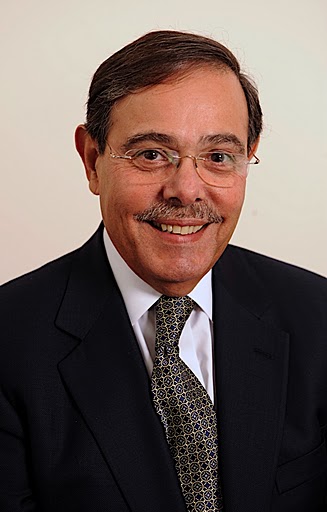Eduardo Hugo Marti
age ~87
from Weston, FL
- Also known as:
-
- Eduardo H Marti
- Eduardo Coc Marti
- Eduardo Manuel Marti
- Eduardo M Marti
- Edwardo H Marti
- Eduardo Bernaza
- Edvardo Marti
- Eduardo Martin
- Edwardo Bernaza
- Phone and address:
-
1332 Bayview Cir, Fort Lauderdale, FL 33326
9546830418
Eduardo Marti Phones & Addresses
- 1332 Bayview Cir, Ft Lauderdale, FL 33326 • 9546830418
- 3888 Heron Ridge Ln, Weston, FL 33331 • 9543491997 • 9547528098
- Miramar, FL
- Bonita Springs, FL
- Pompano Beach, FL
- Miami, FL
- Eaton, TN
Work
-
Company:Surgery Center Ft Lauderdale
-
Address:4485 N State Road 7, Lauderdale Lakes, FL 33319
-
Phones:9547350096
Education
-
School / High School:University Complutense of Madrid / Faculty of Medicine
Languages
English
Specialities
Anesthesiology
Us Patents
-
Portable Lower Limb Therapy Device
view source -
US Patent:20210101043, Apr 8, 2021
-
Filed:Dec 18, 2020
-
Appl. No.:17/126423
-
Inventors:Eduardo M. Marti - Weston FL, US
-
International Classification:A63B 21/00
A63B 21/04
A63B 23/04 -
Abstract:A portable lower limb therapy device having a support base and a force transfer system. The support base includes an exterior surface suitable to slide on smooth surfaces and an interior surface suitable to receive and conform to a foot of a user. The force transfer system embodied through one or two cords integrated with the support base and operates to transfer force applied behind and above the foot of a user that is in the support base to the support base. The portable lower limb therapy device may be used with a wearable anchor that is attachable to the thigh of the user of allows for the cord or cords to be fixed in place for the performance of static progressive stretch therapy motions without requiring ongoing manual force.
-
Pivoting Lower Limb Therapy Device
view source -
US Patent:20210045955, Feb 18, 2021
-
Filed:Aug 14, 2019
-
Appl. No.:16/540168
-
Inventors:Eduardo Marti - Weston FL, US
-
International Classification:A61H 1/02
A63B 21/00
A63B 21/055 -
Abstract:A pivoting lower limb therapy device formed from a lever frame having a handle portion integral with its proximal end and a first orthotic portion adjacent to its distal end, a base frame having a second orthotic portion integral with its proximal frame end and a surface support portion integral with its distal frame end, with the lever frame rotatably attached to the base frame so as to permit the first orthotic portion to move across two dimensions relative to the second orthotic portion in response to an exertion of mechanical force on the handle portion. The pivoting lower limb therapy device may also include a strap assembly connected to and extending between the proximal end of the lever frame and the proximal frame end of the base frame so as to exert mechanical force on the two frame members.
-
Shoulder Rehabilitation Brace
view source -
US Patent:20210038417, Feb 11, 2021
-
Filed:Dec 24, 2019
-
Appl. No.:16/726817
-
Inventors:Eduardo Marti - Weston FL, US
-
International Classification:A61F 5/01
A61F 5/05 -
Abstract:A shoulder rehabilitation brace that operates to aid patients in rehabilitating their shoulder joint in an anatomically correct manner with the trapezius is locked down in order to prevent substantial upward shoulder shrug movements. Embodiments of the shoulder rehabilitation brace may include a shoulder strap and a thigh strap, with the shoulder strap using the thigh strap as an anchor while encircling a user's torso and engaging the user's shoulder to cause force to be exerted on the shoulder that prevents shoulder/scapular hiking and keeps the shoulder blade in retracted position in a manner that helps prevent potential shoulder impingement scenarios. In this regard, the shoulder rehabilitation brace is able to emulate the same “hand on trapezius area” function that therapists manually apply to patient rehabbing a shoulder condition in-clinic.
-
Stabilizing Sacpular Rehabilitation Brace
view source -
US Patent:20210038421, Feb 11, 2021
-
Filed:Aug 10, 2019
-
Appl. No.:16/537558
-
Inventors:Eduardo Marti - Weston FL, US
-
International Classification:A61F 5/37
A61F 5/058 -
Abstract:A stabilizing scapular rehabilitation brace that operates to aid patients in rehabilitating their shoulder joint in an anatomically correct manner with the trapezius is locked down in order to prevent substantial upward shoulder shrug movements. The stabilizing scapular rehabilitation brace includes a shoulder harness, a stabilization strap, and a thigh strap, with the stabilization strap operating to both tighten the shoulder harness on a user and connect and anchor the shoulder harness to the thigh strap. With the shoulder harness operating to keep the user's shoulder blades retracted and the thigh strap and stabilization strap preventing the shoulder harness, these components work together to emulate the same “hand on trapezius area” function that therapists manually apply to patient rehabbing a shoulder condition in-clinic.
-
Adjustable Shoulder Exercise Device
view source -
US Patent:20210038940, Feb 11, 2021
-
Filed:May 4, 2020
-
Appl. No.:16/866018
-
Inventors:Eduardo Marti - Weston FL, US
-
International Classification:A63B 21/00
A63B 23/12 -
Abstract:An adjustable shoulder exercise device which includes a frame base, a pair of frame columns having a vertical portion and a horizontal portion, at least one cross frame which extents orthogonally relative to the vertical portion of the frame columns and either pulley assemblies or a resistance band set. The adjustable shoulder exercise device allows total control of all active and passive motions of the shoulder, in multiple planes and using multiple kinetic chains of motion. The adjustable shoulder exercise device described herein acts as a three dimensional grid system employing the use of multiple pulley assemblies or resistance bands that can be positioned in a multitude of heights and lateral positions to allow movements to be performed from all angles relative to the human shoulder.
-
Adjustable Shoulder Exercise Device
view source -
US Patent:20210038941, Feb 11, 2021
-
Filed:Aug 10, 2019
-
Appl. No.:16/537556
-
Inventors:Eduardo Marti - Weston FL, US
-
International Classification:A63B 21/00
A63B 23/12 -
Abstract:An adjustable shoulder exercise device which includes a frame base, a vertical frame column, at least one cross frame which extents laterally away from both sides of the frame column and an upper frame which extends laterally away from the front of the frame column. The adjustable shoulder exercise device allows total control of all active and passive motions of the shoulder, in multiple planes and using multiple kinetic chains of motion. The adjustable shoulder exercise device described herein acts as a three dimensional grid system employing the use of multiple pulley assemblies that can be positioned in a multitude of heights and lateral positions to allow movements to be performed from all angles relative to the human shoulder. The pulley assemblies are structured to allow a user to apply reciprocating motion for the purpose of exercise through use of their opposing limbs.
-
Programmable Range Of Motion System
view source -
US Patent:20200330812, Oct 22, 2020
-
Filed:Jul 7, 2020
-
Appl. No.:16/922374
-
Inventors:- Atlanta GA, US
Eduardo M. Marti - Weston FL, US
Robert T. Kaiser - South Hampton NJ, US -
International Classification:A63B 21/00
A61H 1/02
A63B 21/002
A63B 23/035
A63B 23/12
A63B 24/00 -
Abstract:A programmable range of motion system has a frame, a range of motion device, a controller, a computer and sensors. The frame has a seat to support a rehab patient. The range of motion device is attached to the frame. The actuator, servo or alternate mechanism selectively rotates the range of motion device through a range of motion for a rehab patient's limb. The controller controls the actuator, servo or alternate mechanism. The computer is connected electronically to the controller. The computer has a software, program or application including a plurality of programmable range of motion movements for exercising the limb. The sensor detects movements of the actuator, servo or alternate mechanism and records data back to the computer. The term actuator as used hereafter includes servo or alternate articulating mechanism.
-
Wearable Anchor For A Therapy Device
view source -
US Patent:20200086159, Mar 19, 2020
-
Filed:Nov 7, 2018
-
Appl. No.:16/183670
-
Inventors:Eduardo M. Marti - Weston FL, US
-
International Classification:A63B 21/055
A63B 21/04
A63B 23/035 -
Abstract:A wearable anchor having a support base, a locking mechanism, and a securing strap and which can be used to mechanically fix a therapy device a desired position relative to a user while performing desired therapy motions. The support base defines an arcuate body suitable to be placed against the thigh of the user, with the securing strap operating to hold it against the user's thigh. The locking mechanism employs a pair of slots positioned above the support base. In this regard, the locking mechanism provides a securing structure to which the cords can be fastened to, thereby allowing the therapy device to be fixed in place without requiring that the user manually hold the therapy device in place. As such, the user can more easily perform therapy motions which require the that the therapy device be held in place, such as static progressive stretch therapy motions.
Resumes

Fundador Y Director General En Forja Consultores
view sourceLocation:
Miami/Fort Lauderdale Area
Industry:
Professional Training & Coaching

Eduardo Marti
view source
Vice Chancellor For Community Colleges At City University Of New York (Cuny
view sourcePosition:
Vice Chancellor for Community Colleges at City University of New York (CUNY
Location:
United States
Industry:
Higher Education
Work:
City University of New York (CUNY
Vice Chancellor for Community Colleges
Vice Chancellor for Community Colleges
License Records
Eduardo H Marti
Address:
759 3392 Sw 175 Ave, Miramar, FL
7171 N University Dr SUITE 300, Tamarac, FL
Phone:
9543833507
License #:
24415 - Active
Category:
Health Care
Issued Date:
Dec 31, 1973
Effective Date:
Jan 1, 1901
Expiration Date:
Jan 31, 2018
Type:
Medical Doctor
Medicine Doctors

Dr. Eduardo Marti, Lauderdale Lakes FL - MD (Doctor of Medicine)
view sourceSpecialties:
Anesthesiology
Address:
Surgery Center Ft Lauderdale
4485 N State Road 7, Lauderdale Lakes, FL 33319
9547350096 (Phone)
4485 N State Road 7, Lauderdale Lakes, FL 33319
9547350096 (Phone)
Languages:
English
Education:
Medical School
University Complutense of Madrid / Faculty of Medicine
University Complutense of Madrid / Faculty of Medicine

Eduardo H. Marti
view sourceSpecialties:
Anesthesiology
Work:
Surgery Center Ft Lauderdale
4485 N State Rd 7, Fort Lauderdale, FL 33319
9547350096 (phone), 9547395995 (fax)
4485 N State Rd 7, Fort Lauderdale, FL 33319
9547350096 (phone), 9547395995 (fax)
Education:
Medical School
Univ Complutense De Madrid, Fac De Med, Madrid, Spain
Graduated: 1970
Univ Complutense De Madrid, Fac De Med, Madrid, Spain
Graduated: 1970
Languages:
English
Spanish
Spanish
Description:
Dr. Marti graduated from the Univ Complutense De Madrid, Fac De Med, Madrid, Spain in 1970. He works in Lauderdale Lakes, FL and specializes in Anesthesiology.

Eduardo Hugo Marti, Tamarac FL
view sourceSpecialties:
Anesthesiology
Pain Medicine
Pain Medicine
Work:
Anesthesia Pain Care Consultants Inc.
7171 N University Dr, Tamarac, FL 33321
7171 N University Dr, Tamarac, FL 33321
Education:
Universidad Complutense De Madrid (1970) Anesthesiology

Eduardo H Marti, Tamarac FL
view sourceSpecialties:
Anesthesiologist
Address:
7171 N University Dr, Tamarac, FL 33321
Name / Title
Company / Classification
Phones & Addresses
Principal
Team Post Op Inc
Business Services at Non-Commercial Site
Business Services at Non-Commercial Site
19274 S Hibiscus St, Fort Lauderdale, FL 33332
Manager
T-Rex Rehab LLC
Business Services at Non-Commercial Site
Business Services at Non-Commercial Site
19274 S Hibiscus St, Fort Lauderdale, FL 33332
Anesthesiology
The Surgery Center of Fort Lauderdale
Specialty Outpatient Clinic
Specialty Outpatient Clinic
4485 N State Rd 7, Fort Lauderdale, FL 33319
9547175221
9547175221
Secretary, Treasurer, Vice President, Director, President
F & A INTERNATIONAL SERVICES INC
15705 W Watterside Cir APT 103, Fort Lauderdale, FL 33326
15705 W Waterside Cir, Fort Lauderdale, FL 33326
15705 W Waterside Cir, Fort Lauderdale, FL 33326
Eduardo Marti MD
Anesthesiology
Anesthesiology
7171 N University Dr, Fort Lauderdale, FL 33321
9547203188
9547203188
Anesthesiology
Anesco North Broward
Medical Practice · Medical Doctor's Office · Accountant · Anesthesiology · Internist · Billing Service · Offices of Physicians, Except Mental Health
Medical Practice · Medical Doctor's Office · Accountant · Anesthesiology · Internist · Billing Service · Offices of Physicians, Except Mental Health
3601 W Commercial Blvd, Fort Lauderdale, FL 33309
3601 W Coml Blvd, Fort Lauderdale, FL 33309
9544859703, 9544841651, 9544852002, 9544855666
3601 W Coml Blvd, Fort Lauderdale, FL 33309
9544859703, 9544841651, 9544852002, 9544855666
President
Marti Medical Distributors Inc
Health/Allied Services
Health/Allied Services
19274 S Hibiscus St, Fort Lauderdale, FL 33332
President
ORTHOXL INC
19274 S Hibiscus St, Fort Lauderdale, FL 33332
Plaxo

Eduardo Marti
view source535 E. 80th Street , NY,NY 10075Vice Chancellor at CUNY

Eduardo Marti Muoz Nava...
view source
Eduardo Marti
view source
Ram Eduardo Marti Silva
view source
Eduardo Marti Rico
view source
Carlos Eduardo Marti
view source
Eduardo Marti
view source
Alfredo Eduardo Marti L...
view source
Eduardo Gonzalez Marti
view sourceGoogleplus

Eduardo Marti
Work:
Molino - Autoelevadorista
Education:
Secundarios

Eduardo Marti

Eduardo Marti

Eduardo Marti

Eduardo Marti

Eduardo Marti

Eduardo Marti

Eduardo Marti
Youtube
Flickr
Myspace

Eduardo Marti
view sourceGet Report for Eduardo Hugo Marti from Weston, FL, age ~87

















